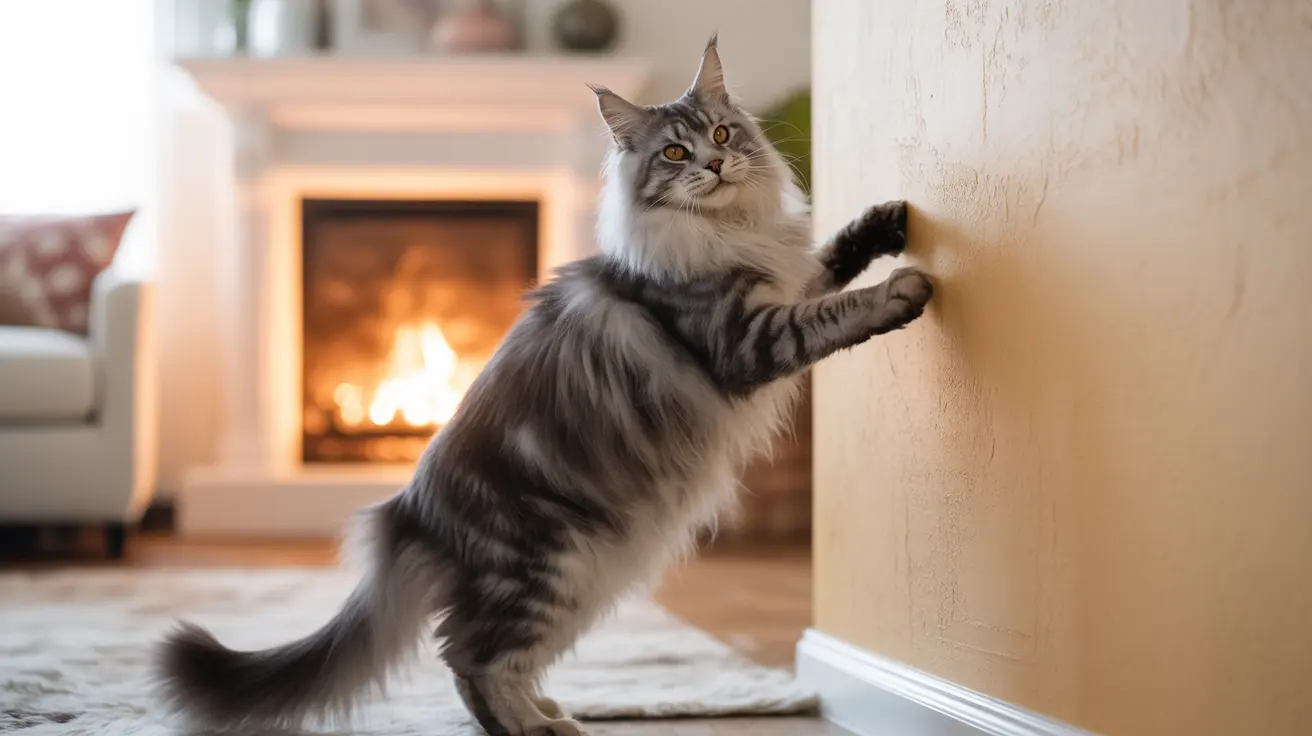Natural Instincts Behind Wall Scratching
Cats are driven by powerful natural instincts that make scratching an essential part of their daily routine. When your cat scratches the wall, they're actually fulfilling several biological needs:
Territorial Marking
Cats have scent glands in their paw pads that release pheromones when they scratch. This marking behavior helps them establish territory and create a sense of security in their environment. Even indoor cats retain this primitive instinct to mark their space.
Claw Maintenance
Wall scratching helps cats remove dead outer sheaths from their claws, keeping them sharp and healthy. This natural grooming behavior is crucial for maintaining proper claw health and function, much like their wild counterparts would do with trees.
Environmental and Emotional Triggers
Stress and Anxiety
Cats often increase their scratching behavior when feeling stressed or anxious. Common triggers include:
- Changes in household routine
- New pets or family members
- Moving to a new home
- Loud noises or construction
- Changes in their environment
Attention-Seeking Behavior
Some cats learn that scratching walls effectively gets their owner's attention. Whether the response is positive or negative, any reaction can reinforce this behavior, especially if it results in feeding, play, or interaction.
Solutions to Prevent Wall Scratching
Provide Appropriate Alternatives
The most effective way to protect your walls is to provide attractive scratching alternatives:
- Tall, sturdy scratching posts
- Horizontal scratching pads
- Different textures (sisal, cardboard, carpet)
- Multiple scratching stations throughout your home
Environmental Enrichment
Keep your cat mentally and physically stimulated to reduce problematic scratching:
- Regular interactive play sessions
- Climbing trees and perches
- Puzzle feeders and rotating toys
- Window perches for entertainment
Managing Wall Scratching Effectively
Address wall scratching with a comprehensive approach that considers your cat's needs while protecting your home:
- Place scratching posts near previously scratched areas
- Use positive reinforcement when they use appropriate scratching surfaces
- Consider temporary deterrents like double-sided tape on walls
- Maintain a consistent daily routine to reduce anxiety
Frequently Asked Questions
Why does my cat scratch the walls instead of a scratching post?
Cats may prefer walls over scratching posts if the posts are unstable, too short, or made of unappealing materials. Ensure your scratching posts are sturdy, tall enough for full stretching, and covered in attractive textures like sisal or cardboard.
How can I stop my cat from scratching the walls without causing stress?
Focus on positive reinforcement by providing appropriate alternatives and rewarding their use. Never punish scratching behavior, as this can increase anxiety and worsen the problem. Instead, redirect them to proper scratching surfaces and ensure their environment is enriching.
What does it mean when my cat scratches the wall near their food or litter box?
Scratching near food or litter boxes often indicates territorial marking or dissatisfaction with the setup. Ensure litter boxes are clean and properly sized, and food areas are in comfortable, low-traffic locations.
Is wall scratching a sign that my cat is bored or anxious?
Yes, excessive wall scratching can indicate boredom or anxiety. Increase interactive play time, provide environmental enrichment, and maintain a consistent routine to help reduce stress-related scratching.
What types of scratching posts or surfaces do cats prefer to prevent wall damage?
Most cats prefer tall, sturdy posts covered in rough materials like sisal rope or natural wood. Observe your cat's scratching preferences (vertical vs. horizontal, preferred textures) and provide similar alternatives to make the transition from walls to appropriate surfaces easier.
Conclusion
While wall scratching can be frustrating, understanding that it's a natural behavior helps us address it more effectively. By providing appropriate alternatives, maintaining environmental enrichment, and addressing any underlying stress factors, you can successfully redirect your cat's scratching behavior while keeping them happy and healthy.






